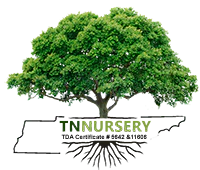Shrubs, Bushes, and Flowers can be Deer Resistant
Creating a stunning garden can be rewarding but quickly becomes frustrating when deer frequently visit your plants. Consider incorporating deer-resistant plants into your landscape to maintain a flourishing garden without constant deer damage. This comprehensive guide will explore some popular deer-resistant plants and their unique characteristics. These resilient selections include Carolina Allspice, Witch Hazel, Boxwoods, Forsythia, Butterfly Bush, Iris, Daffodil, Beebalm, Purple Coneflowers, Yarrow, and Ferns.
Carolina Allspice (Calycanthus floridus)
Carolina Allspice, also known as sweet shrub, is a fragrant and deer-resistant shrub native to the southeastern United States. Its intriguing burgundy-maroon flowers exude a spicy scent that deters deer. These lovely blooms, reminiscent of a mix between strawberries and apples, make it a unique addition to your garden. Carolina Allspice is also a low-maintenance plant, perfect for busy gardeners.
Witch Hazel (Hamamelis virginiana)
Witch Hazel is an enchanting shrub with strikingly vibrant fall foliage and is also deer-resistant. This North American native plant boasts fragrant yellow flowers and blooms in late winter to early spring. Its astringent properties have made it a popular ingredient in skincare products. Deer's avoid Witch Hazel, making it a practical choice for deer-prone areas.
Boxwoods (Buxus spp.)
Boxwoods are classic, evergreen shrubs that bring elegance to any garden. These dense, compact shrubs are known for their glossy, dark green leaves and are exceptionally deer-resistant. Boxwoods can be pruned into various shapes and sizes, making them versatile for hedges, topiaries, or garden borders. Their resilience and year-round beauty make them an excellent choice for gardeners seeking low-maintenance deer-resistant plants.
Forsythia (Forsythia spp.)
Forsythia is a herald of spring with its bright yellow blossoms. These thorny shrubs are deer-resistant, primarily due to their bitter-tasting foliage. Forsythia's cheerful flowers are welcome in early spring. They add a burst of color after a long winter. To maintain the forsythia's size and shape, you can prune it, making it adaptable to various garden styles.
Butterfly Bush (Buddleia davidii)
Butterfly Bush is not only a magnet for pollinators but also deer-resistant. Its fragrant, cone-shaped flower clusters attract butterflies, hummingbirds, and bees while discouraging deer from feasting in your garden. Available in a range of colors, including purple, pink, and white, Butterfly Bush adds both color and wildlife appeal to your outdoor space.
Iris (Iris spp.)
Irises are elegant perennials known for their striking blooms and resilience against deer. These hardy plants offer various colors and shapes, making them versatile for gardeners. The scent of iris flowers is often too strong for deer, making them less likely to munch on these beauties. Iris varieties like Bearded Iris and Siberian Iris are particularly deer-resistant.
Daffodil (Narcissus spp.)
Daffodils, with their cheerful yellow or white blossoms, are a staple of spring gardens. Fortunately, they are also deer-resistant due to their toxic bulbs. Deer tend to avoid daffodils, making them a safe choice for gardeners concerned about deer damage. These perennial bulbs come in various sizes and forms, adding charm and color to your garden year after year.
Beebalm (Monarda spp.)
Beebalm, or Bergamot, is a vibrant and aromatic perennial that attracts pollinators while deterring deer. With its tubular flowers in red, pink, or purple shades, Beebalm is a striking addition to any garden. Its strong, minty fragrance and aromatic oils make it unpalatable to deer, ensuring your garden remains untouched by these critters.
Purple Coneflowers (Echinacea purpurea)
Purple Coneflowers are a source of medicinal benefits and a beautiful deer-resistant perennial. These daisy-like flowers feature bold, purple petals and a prominent cone-shaped center. Purple Coneflowers are known for their hardiness and ability to thrive in various soil conditions. Deer tend to avoid them, allowing these vibrant blooms to flourish.
Yarrow (Achillea spp.)
Yarrow is a challenging and versatile perennial that is often deer-resistant. Its feathery foliage and flat-topped flower clusters come in various colors, including white, yellow, and pink. Yarrow is known for its ability to attract beneficial insects while repelling deer. Its drought tolerance and easy-care nature make it a valuable addition to deer-prone gardens.
Ferns (Various species)
Ferns, with their lush, feathery fronds, can add a touch of elegance to your garden. Many fern species are deer-resistant due to their texture and taste. Whether you choose Ostrich Ferns, Cinnamon Ferns, or Lady Ferns, these shade-loving plants can thrive in areas where deer are prevalent, adding a serene and verdant backdrop to your garden.
Creating a deer-resistant garden doesn't mean sacrificing beauty or diversity. By choosing plants like Carolina Allspice, Witch Hazel, Boxwoods, Forsythia, Butterfly Bush, Iris, Daffodil, Beebalm, Purple Coneflowers, Yarrow, and Ferns, you can enjoy a garden that remains unscathed by deer while providing a stunning and vibrant landscape for years to come. These plants offer various colors, scents, and textures, ensuring your garden remains an enchanting and tranquil outdoor oasis.






















































